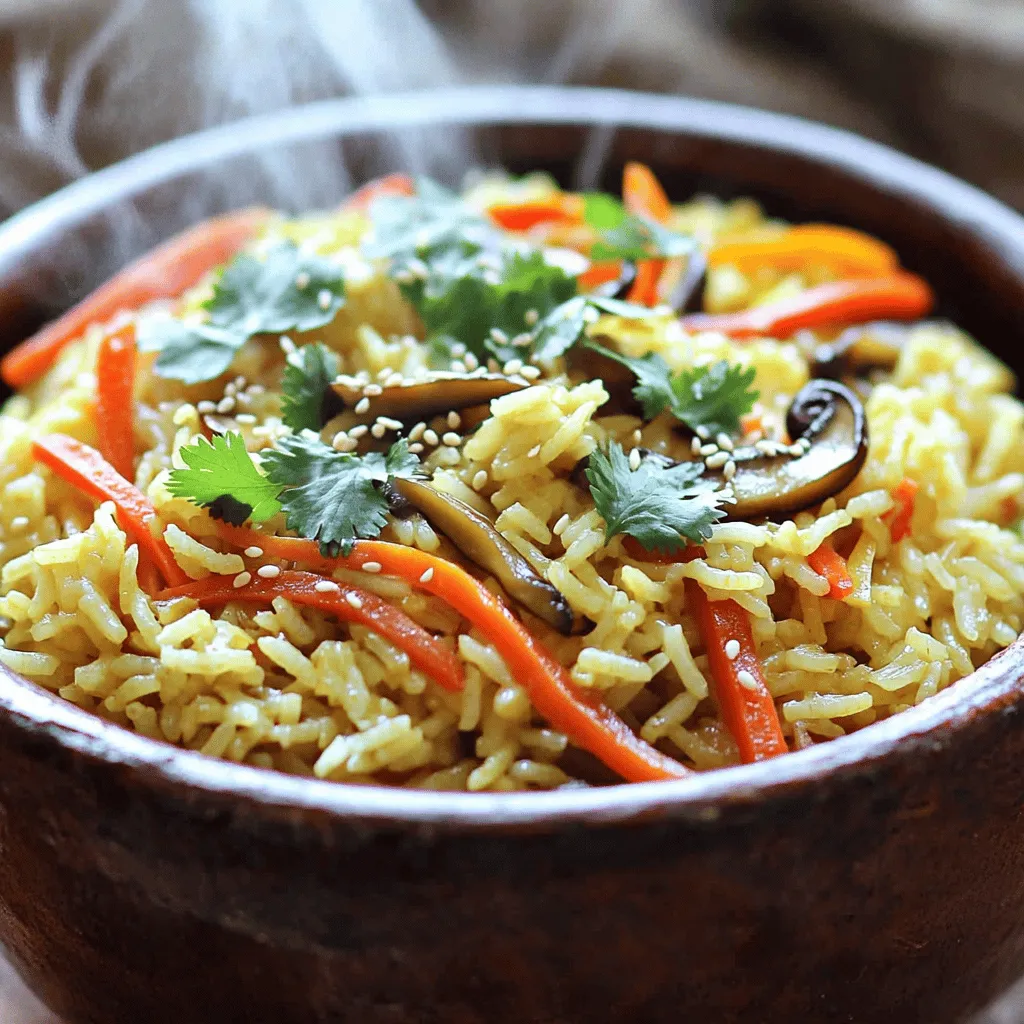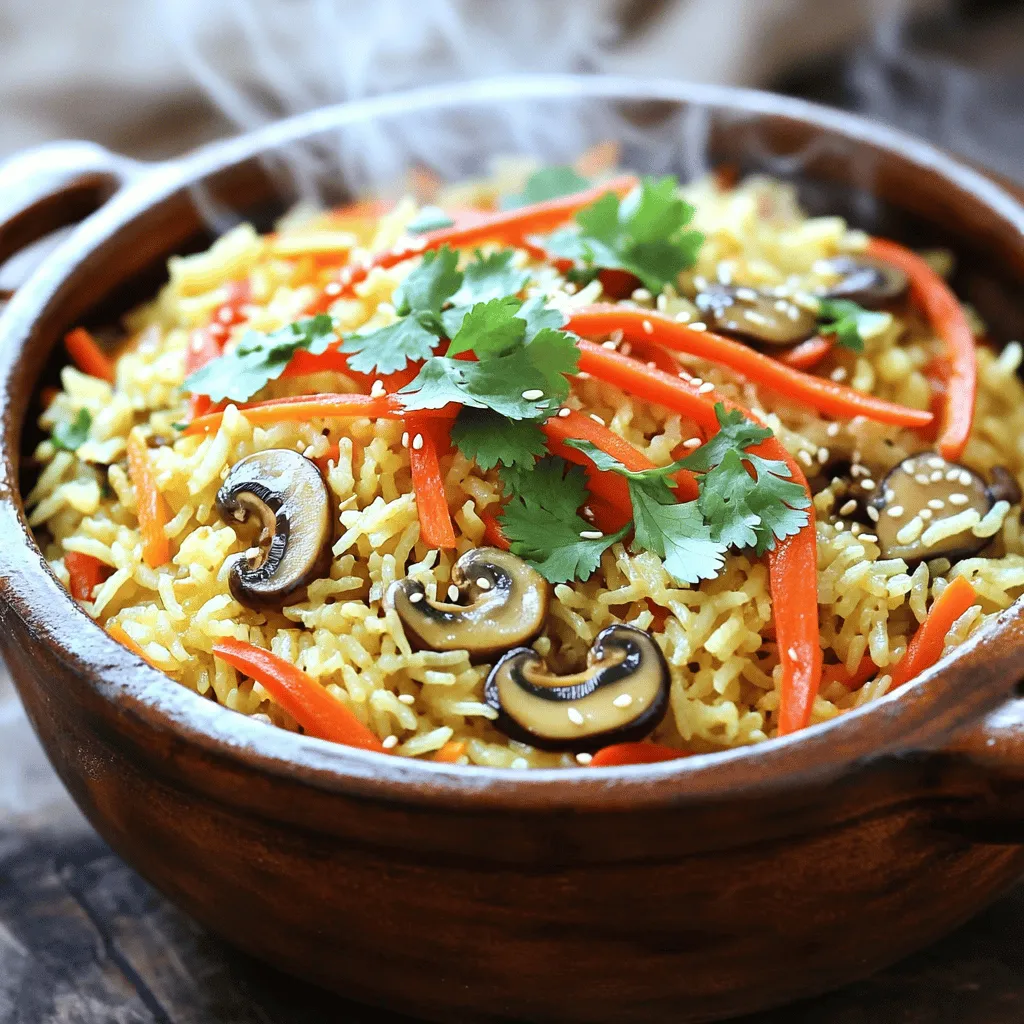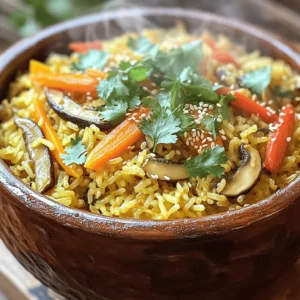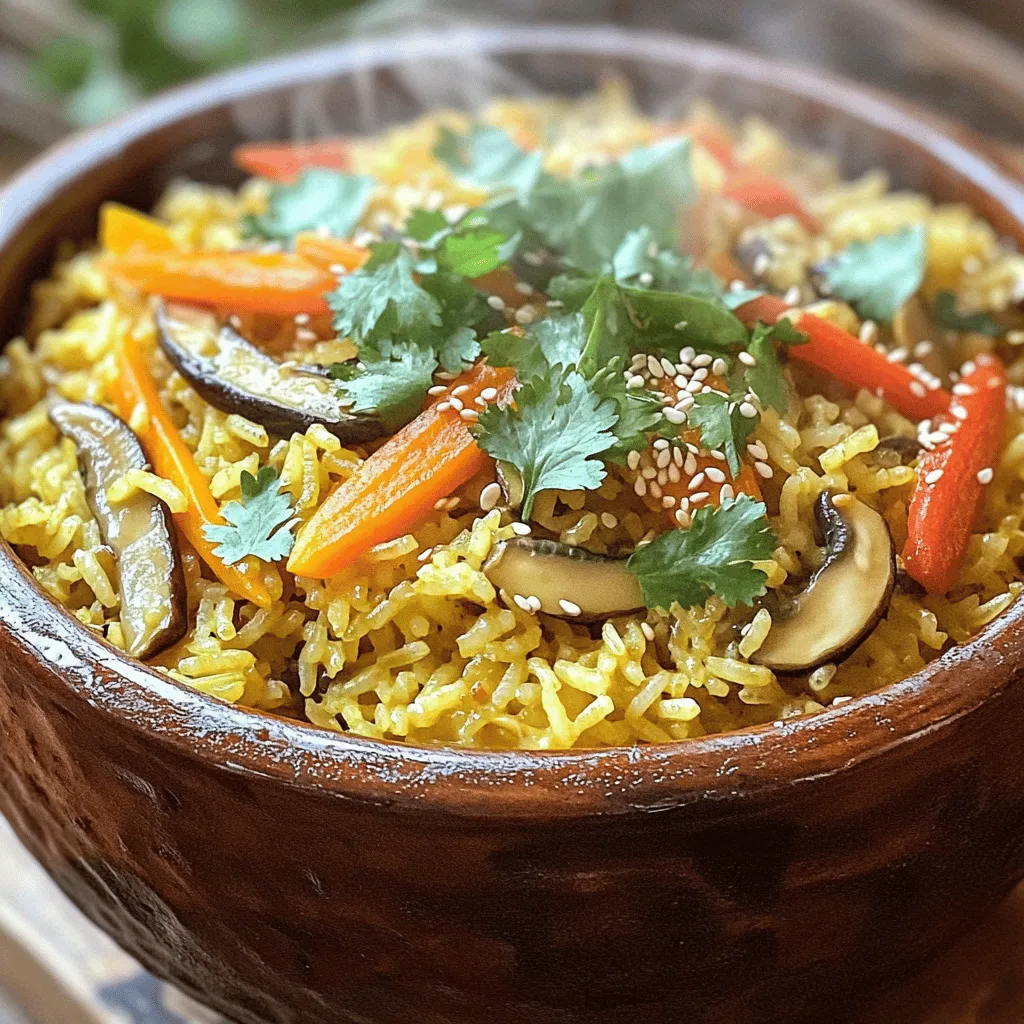Are you ready to elevate your cooking game? Clay pot rice is not just a meal; it’s a delightful experience. This guide covers everything you need to know, from choosing the right ingredients to perfecting your cooking technique. Whether you’re a curious beginner or a seasoned chef, I’ll share essential tips and variations that will make your clay pot rice both tasty and healthy. Let’s dive in!
What Are the Essential Ingredients for Clay Pot Rice?
To make great clay pot rice, you need key ingredients. The base is the rice. Jasmine rice works well. It has a nice aroma and fluffy texture. You’ll also need broth. Chicken broth adds flavor, but vegetable broth suits vegetarians.
What Types of Rice Work Best for Clay Pot Cooking?
Jasmine rice is my top choice. It cooks evenly and absorbs flavors well. Other types include basmati rice or short grain rice. Each adds its unique taste and texture. Rinse the rice before cooking. This step removes excess starch and keeps the rice fluffy.
How Can I Choose the Right Proteins for My Recipe?
Choosing proteins is important for flavor. Chicken breast is a classic choice. It cooks quickly and stays juicy. If you prefer plant-based options, tofu is great. Marinate it in soy sauce for extra taste. You can also use shrimp or pork for variety.
What Vegetables and Toppings Should I Include?
Vegetables add color and nutrition. I love using shiitake mushrooms and carrots. They provide nice texture and taste. Red bell peppers add sweetness. For toppings, try green onions for a fresh crunch. Sesame seeds and cilantro make a lovely garnish. You can find the full recipe above for more details on the perfect blend of ingredients.
How Do You Cook Clay Pot Rice Perfectly?
Cooking clay pot rice is a joyful experience. You can create a delicious meal with just a few steps. Start by rinsing the jasmine rice. This helps remove excess starch. Rinse until the water runs clear. Drain the rice well before using it.
What Are the Key Cooking Techniques?
The key to great clay pot rice is layering your ingredients. Begin by heating sesame oil in your clay pot. Add minced garlic and ginger, cooking until fragrant. This step builds a rich base. Then, add your protein, like diced chicken or tofu. Cook it until it is browned. Following this, mix in your vegetables. Use shiitake mushrooms, carrots, and red bell peppers for color and flavor.
How Can I Achieve a Crispy Rice Crust?
To get that crispy rice crust, don’t stir after adding the broth. Pour the broth over the rice and sauces. Bring it to a boil, but then cover the pot and lower the heat. This keeps steam inside, forming the crust. Let it cook undisturbed for 20 to 25 minutes.
What Are the Cooking Times and Temperature Guidelines?
Cook your clay pot rice on high heat until it boils. Then, reduce the heat to low. Let it simmer for the right time. After cooking, let it sit covered for 10 minutes. This resting time is crucial for fluffy rice. Finally, fluff the rice with a fork and mix in the green onions. You’ll enjoy a flavorful and aromatic dish that represents the best of clay pot cooking. For the full recipe, check out the details above.

What Variations Can I Explore with Clay Pot Rice?
Clay pot rice is fun and flexible. You can try many variations to suit your taste. Let’s explore some options.
How Do I Make Vegetarian Clay Pot Rice?
For a tasty vegetarian clay pot rice, swap out meat for tofu. Use 1 cup of diced tofu instead of chicken. Keep all veggies, like mushrooms and bell peppers. Add 4 cups of vegetable broth in place of chicken broth. This change keeps the dish hearty and satisfying. Season with salt, pepper, and soy sauce to taste. This vegetarian version is just as flavorful!
What Seafood Options Can Be Used?
Seafood can bring a fresh twist to clay pot rice. Shrimp, scallops, and fish fillets work great. For shrimp, use about 1 cup, peeled and deveined. Cook the shrimp for just a few minutes until they turn pink. Scallops need about 3-4 minutes to sear nicely. If using fish, choose firm types like salmon. Add seafood after sautéing the veggies to keep them tender. Each seafood adds unique flavors that enhance the dish.
What Are Some Unique Flavor Profiles to Try?
You can get creative with flavors in clay pot rice. Try adding spices like curry powder or saffron for a new taste. For a smoky flavor, add smoked paprika or chipotle. You might also add herbs like basil or cilantro for a fresh kick. Mixing in different sauces, like teriyaki or chili garlic, will change the dish’s profile. Each variation offers a new journey for your taste buds.
Explore these variations to make clay pot rice your own. For the complete recipe, check out the Full Recipe section.
What Cooking Tips Should Beginners Know about Clay Pot Rice?
Clay pot rice is a fun dish to make. Here are some cooking tips to help you.
How to Layer Ingredients for Optimal Flavor?
Start with a layer of rice. Rinsing the rice helps remove excess starch. This step keeps the rice from being too sticky. Next, add your protein, like chicken or tofu. Place it on the rice. Then, add your veggies on top. This order lets the flavors mix well as it cooks.
What are Common Mistakes to Avoid?
One common mistake is stirring after adding broth. Do not stir! Stirring breaks the crispy layer at the bottom. Another mistake is overcooking. Follow the cooking time closely. If you leave it too long, the rice may burn. Lastly, don’t skip the resting time after cooking. This lets the rice finish cooking evenly.
How Do I Properly Clean and Maintain My Clay Pot?
Cleaning your clay pot is easy. Let it cool first. Use warm water and a soft sponge. Avoid soap, as it can soak into the pot. Rinse well and let it dry. Store it in a cool place. If you notice cracks, do not use it. A well-cared pot can last many years.
For a full experience, check out the full recipe for hearty clay pot rice delight.

What Health Benefits Does Clay Pot Rice Offer?
Clay pot rice is not just tasty; it also has many health benefits. Cooking in clay helps keep the food nutritious. The clay pot retains heat well, which helps cook food evenly. This method often needs less oil and fat. You get a rich flavor without extra calories.
What Nutritional Advantages Are Associated with Clay Cooking?
Clay cooking offers a unique advantage. It can enhance the flavors of the food. The clay material adds minerals to the meal, boosting nutrition. This method also keeps the moisture in, which is great for rice and veggies. You enjoy a meal rich in vitamins and minerals.
How is Clay Pot Rice Healthier Compared to Other Cooking Methods?
Clay pot rice is healthier than frying or grilling. Other cooking methods often use more oil. In contrast, clay cooking uses less fat. You still get that delicious taste while cutting down on calories. The slow cooking process also helps keep more nutrients in the food.
Are There Specific Health Considerations for Clay Pot Ingredients?
When making clay pot rice, choose fresh and healthy ingredients. For proteins, lean meats or tofu work well. Fresh vegetables add fiber and vitamins. Be mindful of sauces; some can be high in sodium. Opt for low-sodium soy sauce to keep it healthier. Always wash your ingredients well to ensure food safety.
This dish, with its wholesome ingredients, makes for a nourishing meal. Enjoy Clay Pot Rice while knowing you are eating something good for you. For the full recipe, check out the details above!
How Can Clay Pot Rice Be Incorporated into Cultural Traditions?
Clay pot rice has deep roots in Asian cooking. It started in China and spread to other Asian nations. The clay pot traps heat and moisture well, making rice taste better. Each bite is filled with rich flavor. The crispy bottom layer is a treat that many love.
Families often use clay pot rice for gatherings. It brings everyone together. The pot sits in the center, and people serve themselves. This style of eating promotes sharing and connection. It creates a warm atmosphere that feels like home.
Certain occasions call for clay pot rice. Many families enjoy it during festivals and holidays. It is often part of family meals on special days. In some cultures, it marks the start of a new year. Others use it for weddings and celebrations. Each bowl holds stories and memories that connect generations.
You can find the full recipe for hearty clay pot rice above. This dish is not just food; it is a part of culture and family. It shares love and warmth through each delicious bite.
Clay pot rice is a simple yet tasty dish that brings many flavors together. We explored the best rice, proteins, and vegetables to use. You learned key cooking techniques to make it just right, ensuring a crispy crust every time. We also discussed interesting variations, tips for beginners, and the health benefits of cooking with clay pots.
Try clay pot rice at your next meal for a delicious experience. It connects food, family, and culture in a unique way. Enjoy experimenting with flavors and techniques to make this dish your own.







